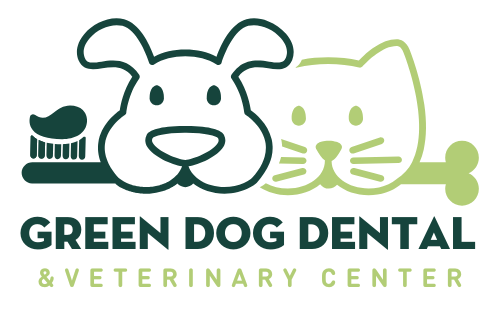
There’s a holiday for everything nowadays (national chocolate day, anyone? It’s November 11th, just in case you need that info), and the month of March is no exception. Green Dog Dental want you to know that March is National Pet Poison Prevention Awareness Month.
HAVE A SAFE ST. PATRICK'S DAY
We’re not saying it’s because March happens to be when we celebrate Saint Patrick’s Day, but we’ll let you draw your own conclusions.
In either case, pet poisoning is an incredibly common reason for emergency veterinary visits. It’s also one of the most preventable.
BE AWARE OF COMMON PET POISONS
Whether you have a dog, cat, parakeet, or lizard, every animal has their very own list of toxins. In fact, one of the best ways to prevent toxicity in your pet is to put a list of toxic substances on your refrigerator. Not every poisonous ingredient is obvious, so having a list handy is a great way to remind yourself what you should and shouldn’t allow your pet access to.
KNOW THEM BY HEART - WHO KNEW ABOUT GRAPES?
Knowing the basics by heart can be live saving for your pet. For example, most people know that dogs shouldn’t eat chocolate, but did you know that grapes, garlic, and xylitol (found in sugarless gum) are also extremely toxic?
WHAT TO DO IF YOUR PET EATS SOMETHING POISONOUS
If you suspect your pet has ingested something that is poisonous, there are a few steps you should take. First, call the ASPCA pet poison hotline. The ASPCA Animal Poison Control Center (APCC) is your best resource for any animal poison-related emergency, 24 hours a day, 365 days a year. If you think your pet may have ingested a potentially poisonous substance, call (888) 426-4435. It’s not a free service, but it’s likely cheaper than an unnecessary trip to the veterinarian, and they can give you guidance on the next best steps.
If you’re sure that your pet has ingested something toxic, or if the APCC instructs you to do so, bring them to the vet right away. Your vet can take measures to stop the absorption of the poisonous substance in its tracks, as well as monitor them for any signs of toxicity.
AN OUNCE OF PREVENTION IS WORTH IT!
When it comes to poisoning in animals, an ounce of prevention is worth a pound of cure. Knowing what substances are toxic to your pet and making sure to keep them out of reach are the two best ways to prevent poisoning and, if they do happen to get into something they shouldn’t, prevent the situation from becoming a tragedy.
